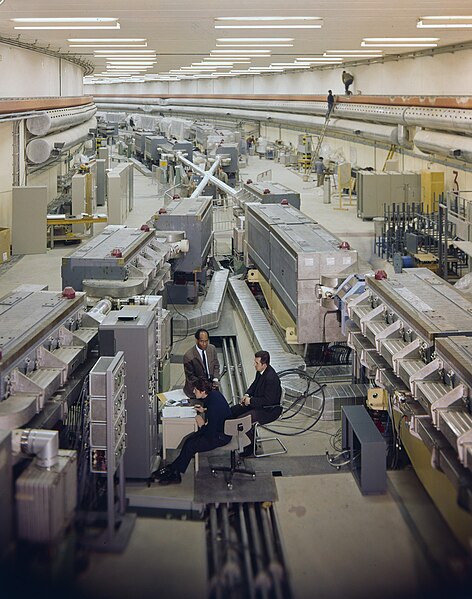The Roman pot is the name of a technique used in accelerator physics. Named after its implementation by the CERN-Rome collaboration in the early 1970s, it is an important tool to measure the total cross section of two particle beams in a collider. They are called pots because the detectors are housed in cylindrical vessels. The first generation of Roman pots was purpose-built by the CERN Central Workshops and used in the measurement of the total cross-section of proton-proton inter-actions in the ISR.
Image: TOTE Ms Roman Pots
Image: Totem Roman Pots
Intersecting Storage Rings
The ISR was a particle accelerator at CERN. It was the world's first hadron collider, and ran from 1971 to 1984, with a maximum center of mass energy of 62 GeV. From its initial startup, the collider itself had the capability to produce particles like the J/ψ and the upsilon, as well as observable jet structure; however, the particle detector experiments were not configured to observe events with large momentum transverse to the beamline, leaving these discoveries to be made at other experiments in the mid-1970s. Nevertheless, the construction of the ISR involved many advances in accelerator physics, including the first use of stochastic cooling, and it held the record for luminosity at a hadron collider until surpassed by the Tevatron in 2004.
Some of the buildings associated with the ISR at CERN, Geneva. The accelerator itself is beneath the curved, tree-covered hill that runs around the outside of the road.
A memorial of Werner Heisenberg and of ISR inauguration
The I4 intersection point at the ISR, which hosted the Split Field Magnet Detector
Image: ISR22






